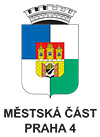Imre Bak 1994-1996 (Új festményei / New Paintings)
type: autorská
place of exhibition: Ludwig Múzeum - Museum of Contemporary Art
date of exhibition: 1996/05/16 - 1996/06/16
note:
http://www.ludwigmuseum.hu/site.php?inc=kiallitas&kiallitasId=201&menuId=45
Something has been lost, but it can be recovered – at least this is what Imre Bak might have thought, when he said in a naive touching tone: “The newest concept of art has been the one which is valid for me all the time.” Fortunately, what he thought to be valid was harmonious with the nature of his talent. He was praised by the critics as the initiator of Hungarian hard edge, postgeometrical eclecticism, and using quotes from the history of art: it might have been better to whisper a few friendly words into his ears instead of these terminus technicuses, because his way of thinking was more lively and consistent than the above statement might suggest. He was the first to conceive how very difficult it was to overcome the vague interpretation of what living in this century and belonging to a particular nation means, this short tradition including the living senior painters, because from this allowed that: ”every generation feels in Hungary that the history of art begins with them. He realised that the history and the history of art are not ideological, because they have no organising force with one centre: he quoted affirmatively Werner Heisenberg in his essay, entitled “Myth, art, signal”: “If one day the magnetic field attracting the compass of the Western man would exhaust – and what else would be the source of this force than the substantial order – then something terrible would happen to mankind…” . After the immediate predecessors, Lossonczy, Gyarmathy, Korniss, who thought it was possible to combine constructivism with surrealism, which were allegedly contradictory to each other. Bak discovered for himself the archaic, the magnetic force, which was ore effective than the historical one. The artistic deed – for example the signal in the space of the painting, having importance in itself, evoking –charming, symbolising the active oneself – is a repeating of something which has already happened by Gilgames‘ travel: the representation of the sunbird gains its importance from the fact that it's an imitation.
His method of working is rigorously systematic thanks to having been liberated. The beginning is intuitive sketch, size of a postcard with its harp contours, which is floating with its colours as a dream in memory. Being compact, the picture needs to be developed in other proportions, sizes. The enlarged, 35 * 50 cm sketch, were the motifs have found there places, becomes dominant in this form; the wrestles with Kandinsky – on the 80 * 120 sketch the usefulness of the module system becomes quite transparent, here the colours become independent and form a harmonious assemble, a possible system of proportions, connections of geometric –organic associations in space. The variations of depth is made plastically final by the stabilised levels of the concluding double picture, the vertical and horizontal axes fix the forms and let the signals fly freely which allows independent associations for ever viewer. There is a kind of serenity on these paintings, serenity of the ever returning, mixed with seriousness.
Bak has become something else without changing spectacularly, without turning the ever same into something else. The paintings of the exhibitions are variations on the same substance.









